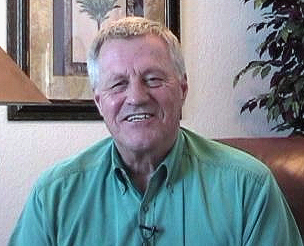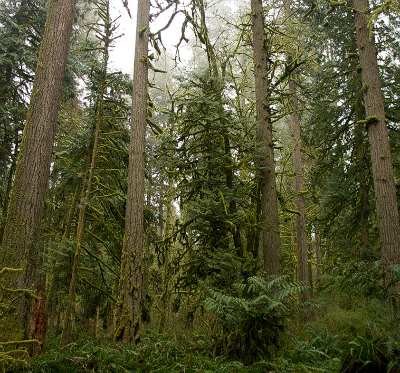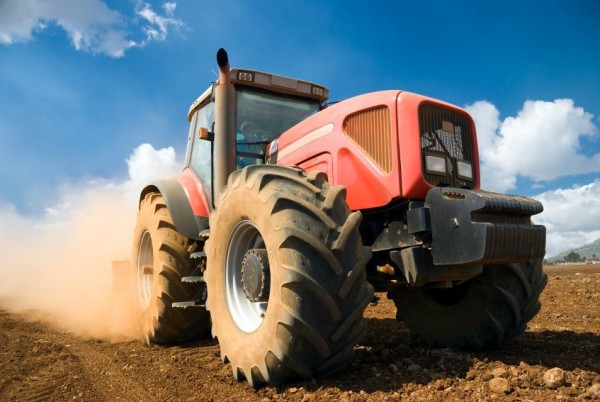 Special Series: What’s the deal with offsets?Photo illustration by Tom Twigg / GristThe compliance market for offsets proposed under the House’s American Clean Energy and Security Act would not just mean more opportunity for companies already in the business of selling carbon offsets. It would also result in a major realignment in the types of offsets offered, shifting away from renewable energy to offsets derived largely from land use, land use change, and forestry projects (otherwise referred to by the clunky acronym LULUCF).
Special Series: What’s the deal with offsets?Photo illustration by Tom Twigg / GristThe compliance market for offsets proposed under the House’s American Clean Energy and Security Act would not just mean more opportunity for companies already in the business of selling carbon offsets. It would also result in a major realignment in the types of offsets offered, shifting away from renewable energy to offsets derived largely from land use, land use change, and forestry projects (otherwise referred to by the clunky acronym LULUCF).
That’s because Waxman-Markey, as the House bill is known, excludes all forms of energy production, including renewable sources, from the huge carbon offset program it would create.
“Since fossil fuels used to make electricity are capped, there is an automatic ‘credit’ from purchasing renewable energy due to the need to hold fewer allowances,” said David Hawkins, director of the Natural Resource Defense Council’s climate center. “Creating an offset credit for those renewable kilowatt hours would be double counting.”
Aside from the carbon price, which would help to level the playing field for clean energy, as Hawkins noted, other mechanisms will also drive renewable energy development, including the renewable electricity standard, which specifies that the United States should get 20 percent of its electricity from renewable sources or energy efficiency by 2020; CAFE standards that regulate auto emissions; and already-approved federal stimulus money for research and development.
But the prospect of agricultural and forestry offsets presented an irresistible opportunity for Big Ag, and just days before the House passed Waxman-Markey on June 26, the House Agriculture Committee, led by Rep. Collin Peterson (D-Minn.) and supported by Agriculture Secretary Tom Vilsack, won some key victories for their constituency that critics argue would impede the country’s ability to actually reduce greenhouse gas emissions.
One of the reasons corn ethanol and, to a lesser extent, soy biodiesel, have fallen out of favor in many circles is because of the international leakage issue. When American farmland is turned over to growing crops for biofuel production, that reduces food availability on the international market, pushing prices higher. People in developing countries can’t afford corn and soy at these prices, so they cut down rainforests to increase local supplies. When the resulting loss of carbon sequestration from deforestation is calculated, biofuels typically do not show a net reduction in CO2 emissions over fossil fuels.
Many people in agriculture regard biofuels as an economic godsend that can help save struggling farms (witness the huge boom in biofuel production in the first half of this decade as oil prices reached historic highs). And they have been dismayed by carbon accounting reports that have shown their product to have an about equal warming effect as fossil fuels, information that led California to exclude corn ethanol from its renewable energy fuel standard.
 Rep. Collin Peterson used his position as chairman of the House Agriculture Committee to win key concessions for farm interests in the Waxman-Markey climate and energy bill.Courtesy AFLCIO2008 via FlickrPeterson and the House Agriculture Committee won a concession that international leakage won’t be calculated as part of American biofuels’ carbon footprint for five years, making it appear more desirable on paper. At that point, there will be an evaluation, but the USDA will have veto power over any decision to count leakage.
Rep. Collin Peterson used his position as chairman of the House Agriculture Committee to win key concessions for farm interests in the Waxman-Markey climate and energy bill.Courtesy AFLCIO2008 via FlickrPeterson and the House Agriculture Committee won a concession that international leakage won’t be calculated as part of American biofuels’ carbon footprint for five years, making it appear more desirable on paper. At that point, there will be an evaluation, but the USDA will have veto power over any decision to count leakage.
Environmentalists argue that there is no point to growing biofuels if there is no net climate benefit, and increased water consumption and fertilizer runoff associated with these crops could make them an environmental net negative.
Profit motives seem a clear driver for the leakage exemption. But it is also partly explained by farmer culture, which is generally more alarmed by the issue of energy security than climate change, said Bob Stallman, president of the American Farm Bureau Federation.
Awarding the USDA oversight of offsets, rather than the EPA, was another big win for the Agriculture Committee. Many environmentalists say the EPA would be better at oversight because its mandate is to protect the environment, whereas the USDA’s is to look out for agricultural interests.
But Stallman said such criticisms show “a huge lack of understanding about what the overall role of USDA is. Yes, production agriculture is a part of its portfolio, but certainly not its priority.”
In addition, the USDA currently runs a variety of conservation programs, he said. “They are required to do oversight. They are required to set up the regulations; they are required to handle compliance. And they have a network of over 2,000 local offices across this country that do that. EPA doesn’t begin to have that kind of network.”
Specifically, Stallman believes USDA is better equipped to oversee a LULUCF-focused carbon offset program than the EPA because it already staffs soil scientists, plant biologists, and agronomists, the people who will calculate to what degree carbon is being sequestered or not emitted based upon any given practice.
Michael Wara of Stanford Law School, however, said he is afraid that the USDA would follow the lead of voluntary offset markets such as the Chicago Climate Exchange (CCX) and the U.S. Department of Energy’s Voluntary Reporting of Greenhouse Gases program, which don’t do on-site monitoring or use third-party verifiers but rather estimate carbon uptake based on soil type, climate zone, and other factors.
Furthermore, deciding what makes a quality offset involves a lot of subjective decisions, Wara said. “Agency discretion is fairly broad, and a number of choices are defensible.”
For example, reducing the use of fertilizer would likely qualify as an agricultural offset. Fertilizer is released from soils into the atmosphere in the form of nitrous oxide, a potent greenhouse gas, and the production of synthetic fertilizer is carbon intensive. However, over-fertilization of fields in the United States is already declining as a result of other policies the USDA has implemented and the rising cost of fertilizer. So how do certifiers take into account the likelihood that fertilizer use would have continued to fall, even without an offset program?
“That’s going to be a very subjective question,” said Wara. “How fast would it have fallen? Would it have leveled off? The USDA faces political pressure from its constituency, which is used to subsidies that are considered to be more like entitlements. So the whole concept that practices change and you might not be entitled to the same level of crediting is not one that’s going to be very popular or familiar to farmers.”
Stallman said he expects to see offsets’ validity reviewed regularly as natural part of the process, negating the need for a periodic, formal review. As an example, he points to no-till farming offsets currently traded on the Chicago Climate Exchange. These offsets are temporary, not permanent. Farmers usually sign a contract for five years, a period during which they agree to implement certain practices. Scientists then calculate a carbon credit for that time frame.
“At the end of five years, there’s nothing to say that there would be another contract available just like that,” said Stallman. “Maybe the USDA would come in and say, given technological changes and other developments that are occurring, the amount of carbon you’re going to reduce by using that practice is a new number.”
While he admits that calculating business as usual versus additionality for offsets can be tricky, Stallman expressed faith in the system. “I would support anything that ultimately qualifies as an offset. My assumption is there’s not going to be an offset granted unless the additionality requirement is met.”
The Offsets Integrity Advisory Board that would be created under Waxman-Markey could be a venue in which to review such issues, according to Daphne Wysham, a fellow at the Institute for Policy Studies, an independent think thank in Washington, D.C. But her optimism is tempered.
“The question is, once you’ve got all these interest groups in place, how easy is it to make these changes politically?” The USDA overseeing these offsets “is like the fox guarding the henhouse,” she said.
—
Below, watch Bob Stallman’s testimony before the Senate environment committee on climate legislation and the agriculture sector. (Read a related Grist story.)



